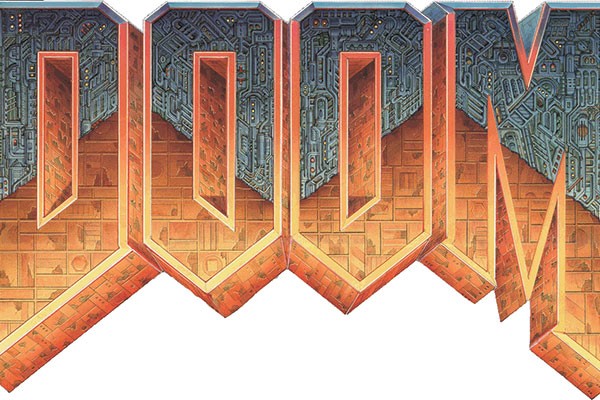Rating: A
Twenty-three years ago, the landscape of gaming was changed forever. Sure, there had been other first-person shooters before—id Software’s own Wolfenstein 3D among them—but none were as influential or widespread as the original Doom in 1993. It’s fast-paced gory action, coupled with a demonic sci-fi aesthetic, quickly grew into a cult classic. It added a multiplayer component under the now-ubiquitous term Deathmatch, which caused headaches for server administrators due to its overwhelming popularity. Now, in 2016, a reboot has been presented to us by id Software once again. Living up to its namesake was no easy feat—yet somehow, despite all the project—scrapping, doubt, and rocky Multiplayer Beta, DOOM has pulled through.
The single player campaign is easily the best part of the game. Those who weren’t fans of the slower-paced Doom 3 can breathe easy, as DOOM slams you straight into the action. Fast, brutal, and responsive, the game plays like a reimagining of the original in a modern environment. Health does not regenerate, and you require health pickups to stay alive. This has been made easier by the addition of Glory Kills. If you get an enemy’s health low enough, they may stagger, and then you can perform an animation to brutally finish off your foe, after which they will drop some health. It’s fast enough to keep the flow of combat going, while giving you a constant source of health, as long as you keep killing—and this is a good thing, as killing in this game is a joy to behold.
Each gun, minus the underpowered infinite ammo pistol, has its place in the pace of combat, requiring constant switching to adapt to each threat. All of the weapons from the original game are accessible, from shotguns, rocket launchers, and the overpowered BFG. A plethora of additional weapons have been added, along with upgradeable weapon mods. The chainsaw makes a return too, as a limited-use insta-kill device that drops a loot explosion with every swing.
Each level plays like a modern version of the original: you can find collectables, ammo caches, key cards, and secrets. Some secrets grant armour and weapon upgrades, while others unlock levels from the original Doom I and II—which you may freely play through with DOOM’s new weapons and enemies. If you manage to complete the campaign, you gain access to extra difficulty levels—including Ultra-Nightmare mode, in which you only have one life to finish the game on the hardest difficulty, much to the delight of your inner sadomasochist.
The game’s story is shown through small in-game scenes, often locking the player in a room or enclosed area, so they can explain what’s going on. The rest of it is told through collectable logs, giving information on areas, foes, and characters. It’s a competent-but-bare story, and that’s the point. The game starts with a 30 second cinematic, and then you are thrown into gameplay. Doom Marine himself is silent, but aggressive. Smashing that which makes him angry, his sole purpose in the game is to destroy anything demonic in the facility he has invaded —much to the detriment of its Robotic owner. He is the voice in your head, trying to guide you to his own benefit, and is often ignored in favour of Doom Marine’s everlasting hatred for hell spawn.
Unfortunately, DOOM’s multiplayer lets down the full package. Co-developed by Certain Affinity, it does DOOM no favours, and feels disconnected and lacking. It contains a few simple game modes but these all feel sub-par. You are limited to two weapons, and the multiplayer makes use of a loadout system, with no weapon pickups at all. The SnapMap level editor feels confusing: even though they have enabled the player to make use of logic and triggers, their use is often frustrating and difficult to manage. id Software has announced their plans to have a go at fixing the Multiplayer and Snapmap modes, but as it is now, it lets DOOM down.
Doom is for those who want to experience the classic circle-strafing, run-and-gun gameplay in a gory environment. If large amounts of visceral gore—or a sub-par multiplayer experience —don’t sound like your thing, steer clear. For everyone else, rip and tear.



